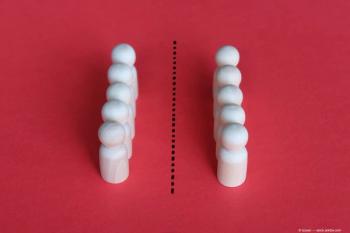
Changing route to 3-piece IOL fixation
With 10,000 baby boomers enrolling in Medicare each day until 2030, the aging population is leading to the development of early and late complications after IOL implantation. And as Jonathan L. Prenner, MD, pointed out, this generation differs from the previous generation in that the younger generation has much higher expectations regarding their visual outcomes after cataract surgery.
The more recent advances in ocular surgical technologies also differ from those use previously in that they have evolved to more efficient and safe microincisional procedures, such as phacoemulsification, 25-gauge surgeries, Descemet’s stripping endothelial keratoplasty, and pars plana vitrectomy.
“In our practice, these advances have led us to develop novel approaches to replace the use of anterior chamber IOLs,” said Dr. Prenner, chairman, Department of Ophthalmology, and clinical professor, Rutgers-Robert Wood Johnson Medical School, New Brunswick, NJ. “While these IOLs are good, there may be simpler ways of achieving the same results.”
To that end, Dr. Prenner and his colleagues have hit on a novel technique for sutureless IOL fixation.
Sutureless intrascleral fixation of IOLs-replaces use of anterior chamber IOLs in certain scenarios, such as in cases of aphakia and IOL exchange. The 1-year results indicate that the procedure is safe and well tolerated.
The technique is a modification of the popular Yamane procedure adopted by anterior segment surgeons.
“The procedure leverages the skills and tool kit of vitreoretinal surgeons to allow performance of the modification that makes it more reliable and efficient in our hands,” said Dr. Prenner during a symposium highlighting the “Best of Retina Society Meetings 2018” at the American Academy of Ophthalmology meeting.
He described a case of a subluxed IOL in the bag that lacked adequate capsular support to facilitate suture fixation of the lens/bag complex.
Dr. Prenner used a 25-gauge vitrectomy handpiece to free the lens and remove the capsular material. He said a thorough vitrectomy with scleral depression is important in such cases to control any posterior manipulations.
He used a microkeratome to make a clear corneal incision, a soft-tipped cannula to elevate the lens off of the retinal surface and into the iris plane, removed the leading haptic, and finally divided the lens and removed it.
During this procedure, Dr. Prenner uses a TSK 30-gauge needle to create a 2-mm-long intrascleral tunnel. This needle has a thinner wall that provides a larger effective lumen to dock the haptic. The tunnel is started 2 mm from the limbus at the horizontal meridian.
He implants an IOL (CT Lucia, Carl Zeiss Meditec) during what he considers the most critical part of the procedure. The lens haptics are made of a nearly indestructible material (polyvinylidene fluoride monofilament) that can withstand severe manipulations. A paracentesis was used to place a forceps into the anterior chamber; the first haptic was docked into the os of the 30-gauge needle, similar to the Yamane procedure.
When the Yamane procedure is performed, according to Dr. Prenner, a potential complication can develop when the first haptic is left in the needle, which is left unattended.
“I prefer to remove the first needle and haptic together,” he said.
In the next step, the tip of the haptic is deformed thermally using low-temperature cautery.
Another challenging step in the Yamane procedure is the placement of the second haptic in the anterior chamber.
Dr. Prenner and colleagues modified this part of the procedure by putting the lens and haptic into the posterior segment and creating a second intrascleral tunnel. This allows them to work in the posterior segment rather than the anterior segment, which does not allow a great deal of movement. For visualization, a chandelier light is introduced through a pre-placed trocar.
“We are very comfortable manipulating the haptic in the posterior segment,” Dr. Prenner said. “We have 360° of mobility. We can find an easy hand position to match the haptic to the os of the 30-gauge needle and then dock the haptic.”
The next step is removal of the second haptic. A pearl offered by Dr. Prenner is that the low-temperature cautery does not touch the haptic tip, but is placed sufficiently close for the tip to form a bulb that prevents retraction of the haptic through the tunnel.
“This procedure allows creation of an efficient exchange in a transconjunctival sutureless manner,” he said.
Dr. Prenner also advised surgeons to place a peripheral iridotomy at the end of these cases to decrease the risk of reverse pupillary block and uveitis-glaucoma-hyphema (UGH) syndrome.
Study results
Nine eyes of eight patients were treated with this sutureless intrascleral fixation procedure.
“The results were reasonable after 1 year,” Dr. Prenner said. “The visual acuity improved in all patients as expected with curing of the aphakia and malposition of the lens.”
Importantly, no significant intraoperative or postoperative complications developed and there was no evidence of haptic erosion.
Dr. Prenner reported one case of iris capture and one case of corneal edema both occurring on postoperative day 1. Both resolved with appropriate treatment.
The results indicated that this novel procedure was well tolerated 1 year postoperatively. Dr. Prenner emphasized that the follow-up was short and he looks forward to longer-term results.
Disclosures:
JONATHAN L. PRENNER, MD
E:
This article was adapted from Dr. Prenner’s presentation during a symposium highlighting the “Best of Retina Society Meetings 2018” at the American Academy of Ophthalmology meeting. Dr. Prenner is a consultant to Alcon Laboratories.
Newsletter
Don’t miss out—get Ophthalmology Times updates on the latest clinical advancements and expert interviews, straight to your inbox.








































